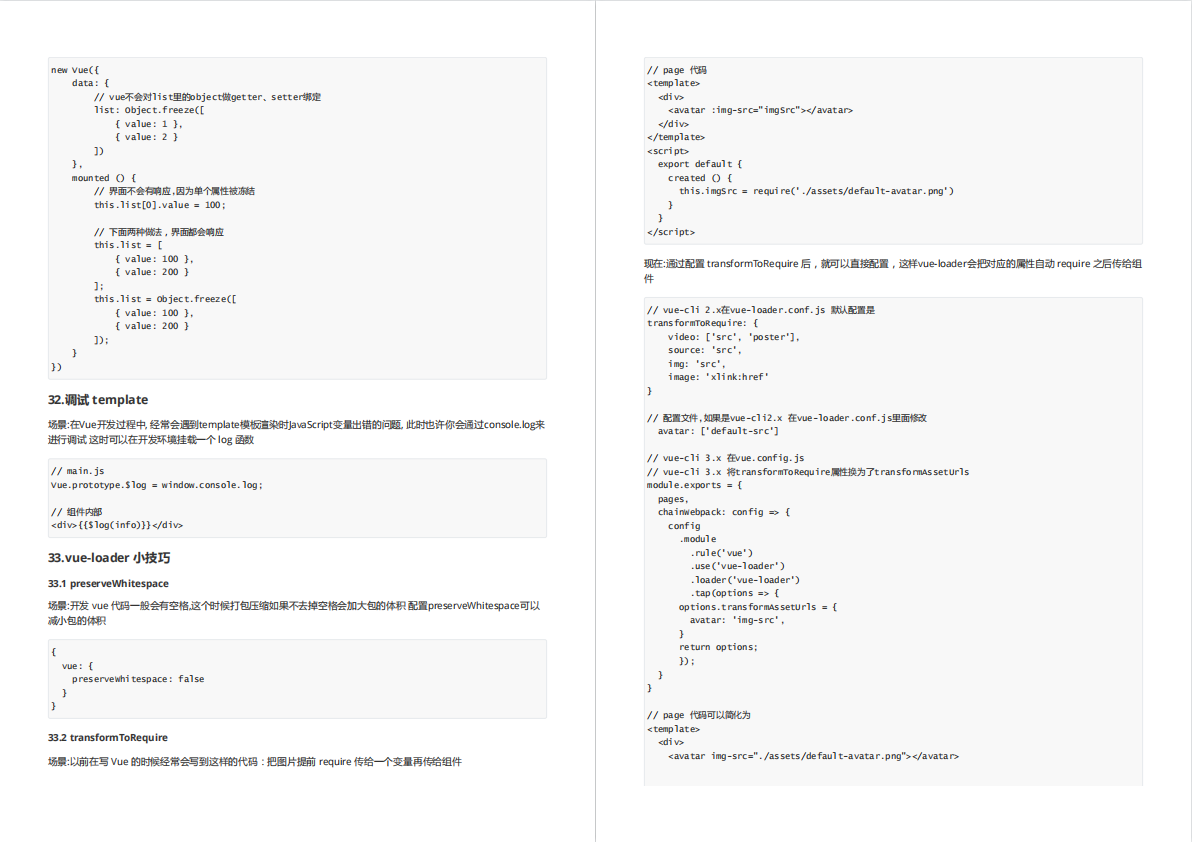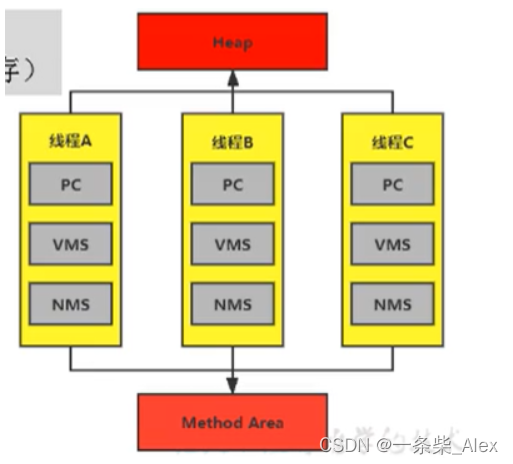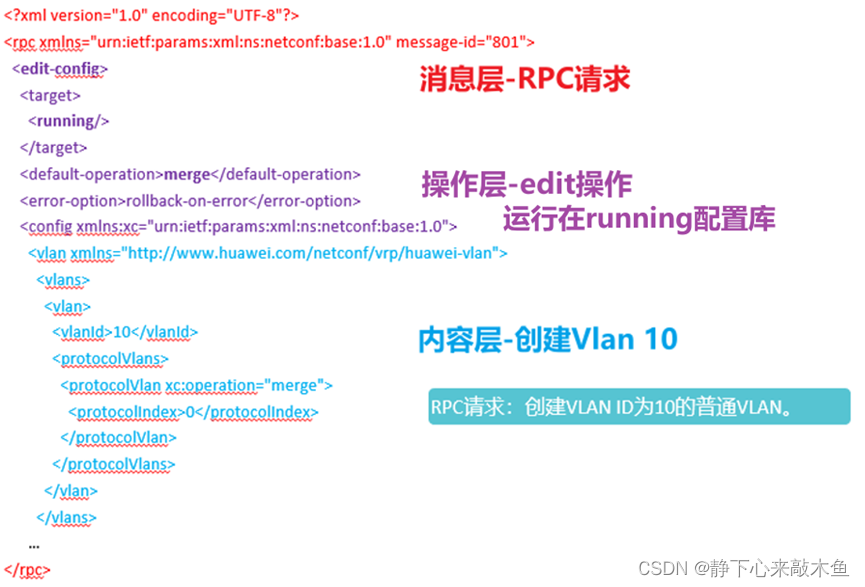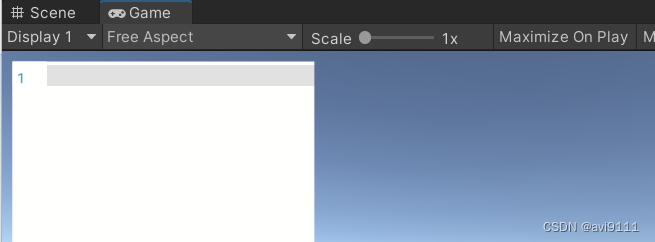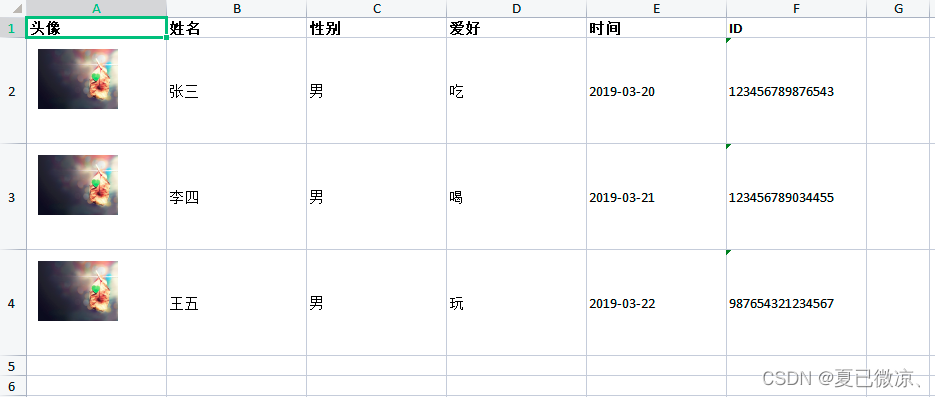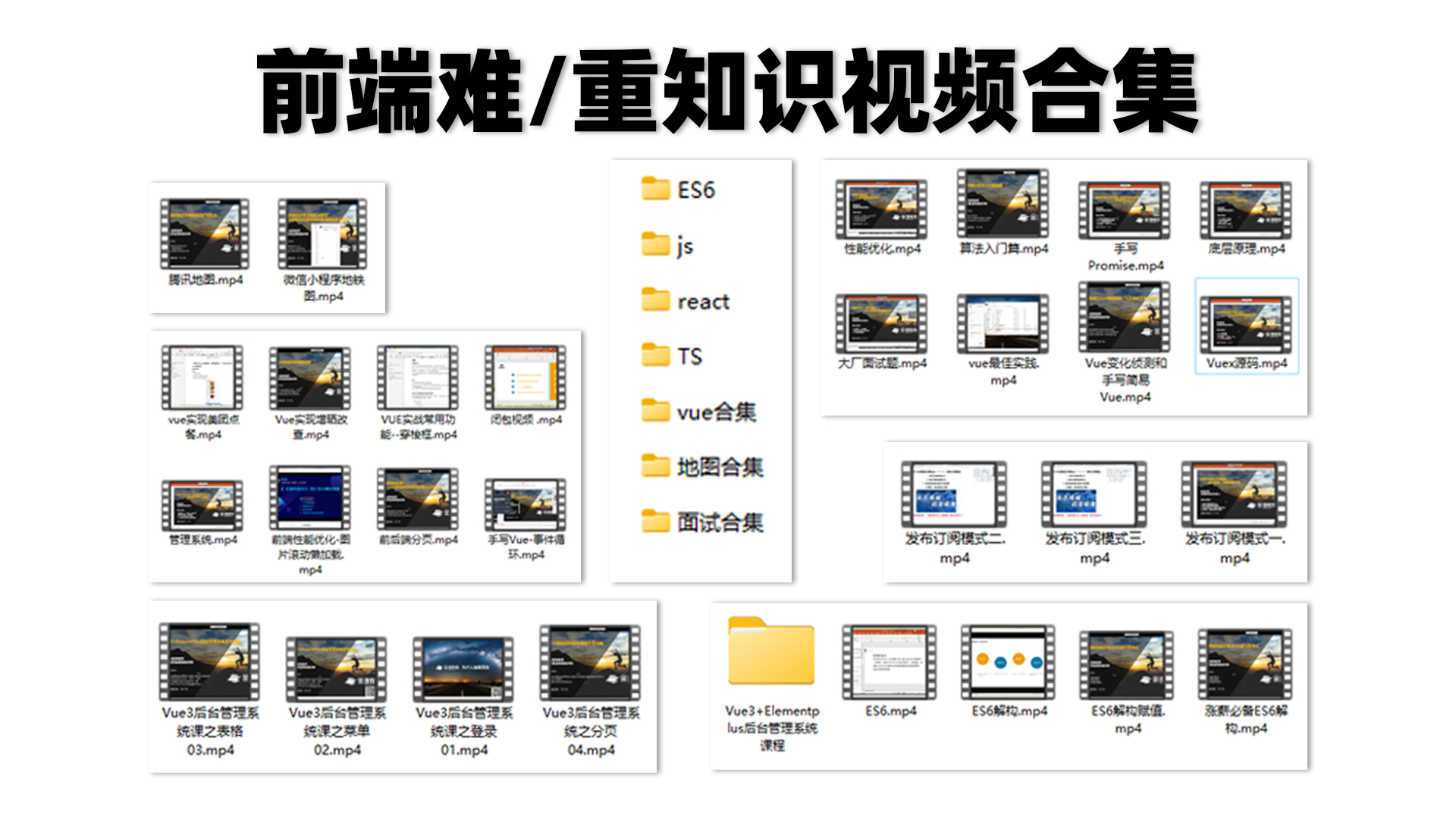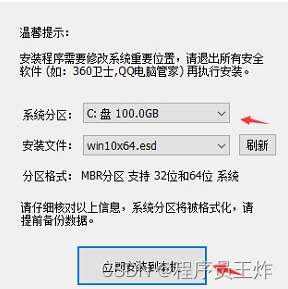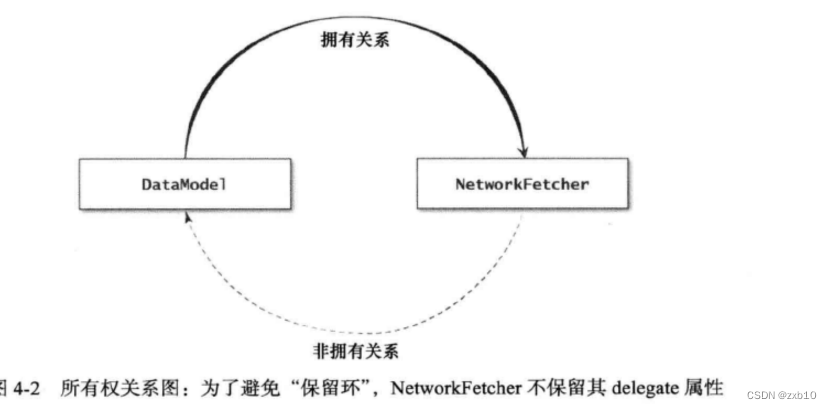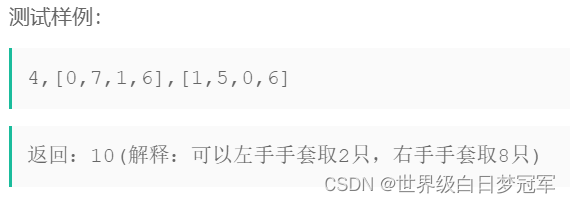1 线程通信
应用场景 : 生产者和消费者问题
假设仓库中只能存放一件产品 , 生产者将生产出来的产品放入仓库 , 消费者将仓库中产品取走消费
如果仓库中没有产品 , 则生产者将产品放入仓库 , 否则停止生产并等待 , 直到仓库中的产品被消费者取走为止
如果仓库中放有产品 , 则消费者可以将产品取走消费 , 否则停止消费并等待 , 直到仓库中再次放入产品为止
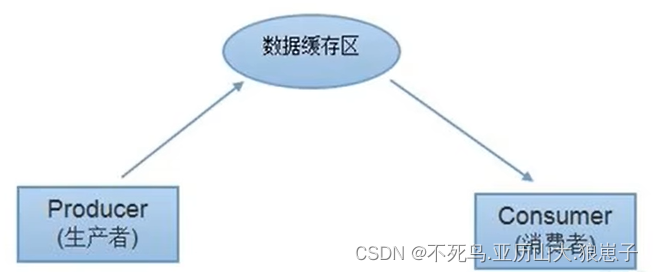
2 线程通信分析
这是一个线程同步问题 , 生产者和消费者共享同一个资源 , 并且生产者和消费者之间相互依赖 , 互为条件 .
对于生产者 , 没有生产产品之前 , 要通知消费者等待 ,而生产了产品之后 , 又需要马上通知消费者消费
对于消费者 , 在消费之后 , 要通知生产者已经结束消费 , 需要生产新的产品以供消费
在生产者消费者问题中 , 仅有synchronized是不够的
synchronized 可阻止并发更新同一个共享资源 , 实现了同步
synchronized 不能用来实现不同线程之间的消息传递 (通信)
Java提供了几个方法解决线程之间的通信问题

注意:均是Object类的方法,都只能在同步方法和同步代码块中使用,否则会抛出异常。
3 解决方式1
并发协作模型 “ 生产者 / 消费者模式 ” --->管程法
生产者 : 负责生产数据的模块 (可能是方法 , 对象 , 线程 , 进程) ;
消费者 : 负责处理数据的模块 (可能是方法 , 对象 , 线程 , 进程) ;
缓冲区 : 消费者不能直接使用生产者的数据 , 他们之间有个 “ 缓冲区
生产者将生产好的数据放入缓冲区 , 消费者从缓冲区拿出数据

下面以生产鸡为例:
定义鸡的实体
package xiong.demo6;
public class Chicken {
int id;
public Chicken(int id){
this.id = id;
}
}
生产和消费都在缓冲区进行
package xiong.demo6;
//缓冲区
public class SynContainer {
//需要一个容器大小
Chicken[] chickens = new Chicken[10];
//容器计数器
int count = 0;
//生产者放入产品
public synchronized void push(Chicken chicken){
//如果容器满了,就需要等待消费者消费
while (count == chickens.length){
//生产等待
try{
this.wait();
}catch (InterruptedException e)
{
e.printStackTrace();
}
}
//如果没有满。我们就需要丢入产品
chickens[count++] = chicken;
this.notify();
}
//消费者消费产品
public synchronized Chicken pop(){
//判断能否消费
while(count==0){
try {
this.wait();
} catch (InterruptedException e) {
e.printStackTrace();
}
}
//如果可以消费
count--;
Chicken chicken = chickens[count];
//吃完了,通知消费者生产
this.notifyAll();
return chicken;
}
}
定义生产者:
package xiong.demo6;
public class Productor extends Thread {
SynContainer container;
public Productor (SynContainer container){
this.container = container;
}
//生产
@Override
public void run() {
int i =0;
while(true){
i++;
System.out.println("生产了"+i+"鸡");
container.push(new Chicken(i));
}
}
}
定义消费者:
package xiong.demo6;
public class Consumer extends Thread{
SynContainer container;
public Consumer(SynContainer container) {
this.container = container;
}
//消费
@Override
public void run() {
int i =0;
while(true){
i++;
System.out.println("消费了-->"+container.pop().id+"只鸡");
try {
Thread.sleep(1000);
}catch (InterruptedException e){
e.printStackTrace();
}
}
}
}
调用线程:
package xiong.demo6;
public class TestPC {
public static void main(String[] args) {
SynContainer container = new SynContainer();
new Productor(container).start();
new Consumer(container).start();
}
}
运行结果如下:
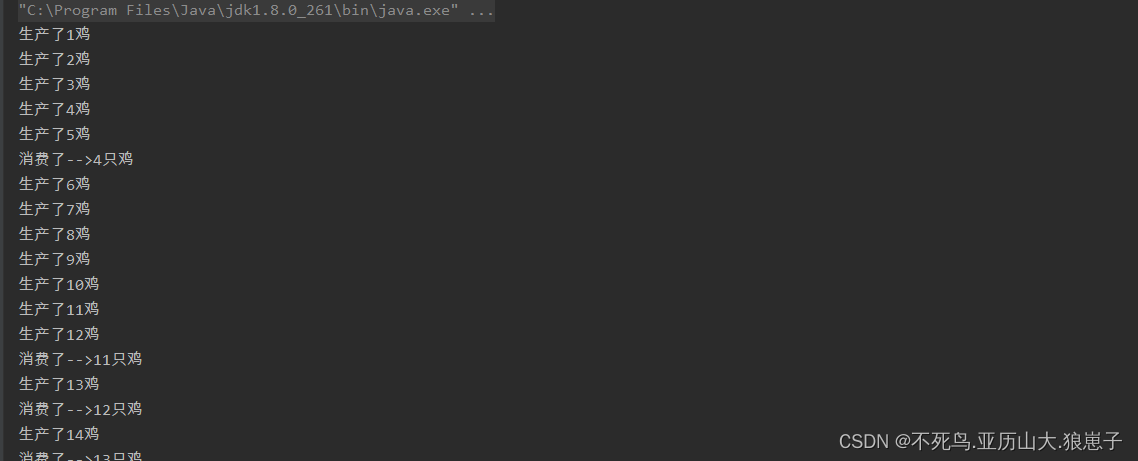
一边生产一边消费
4 解决方式2
并发协作模型 “ 生产者 / 消费者模式 ” --->信号灯法
TV类中设置信号灯
package xiong.demo8;
public class TV {
//演员说话 , 观众等待 true
//观众观看 , 演员等待 false
boolean flag = true;
//说话
String voice;
//表演
public synchronized void play(String voice){
//演员等待
if (!flag){
try {
this.wait();
} catch (InterruptedException e) {
e.printStackTrace();
}
}
System.out.println("表演了"+voice);
this.voice = voice;
//让观众观看
this.notifyAll();
this.flag = !this.flag;
}
//观看
public synchronized void watch(){
//观众等待
if (flag){
try {
this.wait();
} catch (InterruptedException e) {
e.printStackTrace();
}
}
System.out.println("观众听到了: "+voice);
//通知演员说话
this.notifyAll();
this.flag = !this.flag;
}
}
观看者类(消费者)
package xiong.demo8;
public class Watcher extends Thread {
TV tv;
public Watcher(TV tv){
this.tv = tv;
}
@Override
public void run() {
while (true)
{
tv.watch();
}
}
}
表演者类(生产者)
package xiong.demo8;
public class Player extends Thread{
TV tv;
public Player(TV tv){
this.tv = tv;
}
@Override
public void run() {
int i=0;
while (true){
i++;
if (i%2==0){
this.tv.play("节目:快乐大本营播放中");
}else {
this.tv.play("广告:抖音,记录美好生活");
}
try {
Thread.sleep(1000);
}catch (InterruptedException e)
{
e.printStackTrace();
}
}
}
}
测试
package xiong.demo8;
public class TestPC2 {
public static void main(String[] args){
TV tv = new TV();
new Player(tv).start();
new Watcher(tv).start();
}
}
运行结果如下:

5 使用线程池
线程池
背景:经常创建和销毁、使用量特别大的资源,比如并发情况下的线程,对性能影响很大。
思路:提前创建好多个线程,放入线程池中,使用时直接获取,使用完放回池中。 可以避免频繁创建销毁、实现重复利用。类似生活中的公共交通工具。
好处:
- 提高响应速度(减少了创建新线程的时间)
- 降低资源消耗(重复利用线程池中线程,不需要每次都创建)
- 便于线程管理(....)
corePoolSize:核心池的大小
maximumPoolSize:最大线程数
keepAliveTime:线程没有任务时最多保持多长时间后会终止
使用线程池
- JDK 5.0起提供了线程池相关API:ExecutorService 和 Executors
- ExecutorService:真正的线程池接口。常见子类ThreadPoolExecutor
void execute(Runnable command):执行任务/命令,没有返回值,一般用来执行Runnable
<T> Future<T> submit(Callable<T> task):执行任务,有返回值,一般又来执行Callable
void shutdown():关闭连接池
- Executors:工具类、线程池的工厂类,用于创建并返回不同类型的线程池
package xiong.demo7;
import java.util.concurrent.ExecutorService;
import java.util.concurrent.Executors;
public class TestPool {
public static void main(String[] args) {
//1.创建服务,创建线程池
//newFixedThreadPool 参数为:线程池大小
ExecutorService service = Executors.newFixedThreadPool(10);
service.execute(new MyThread());
service.execute(new MyThread());
service.execute(new MyThread());
service.execute(new MyThread());
//2.关闭连接
service.shutdown();
}
}
、
package xiong.demo7;
public class MyThread implements Runnable {
@Override
public void run() {
System.out.println(Thread.currentThread().getName());
}
}
运行结果如下:

